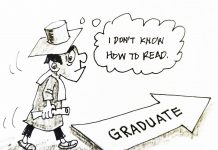
Story Writing techniques have indeed evolved significantly over the years, reflecting changes in reader preferences, societal norms, and the broader cultural context. Early narratives often began with detailed descriptions of settings and characters, aiming to immerse the reader slowly into the world of the story. This method, while thorough, can sometimes feel sluggish to contemporary readers who prefer to be thrown into the action right from the start. Today, many writers opt to begin their tales in medias res, or “in the midst of things,” capturing attention with dynamic scenes and immediate conflicts.
This change in technique doesn’t merely cater to shorter attention spans but also mirrors the fast-paced nature of modern life. Today’s readers, accustomed to the immediacy of information and entertainment, often seek stories that provide instant gratification. Writers have adapted by crafting openings that grab attention quickly, often sacrificing lengthy exposition for punchier, more compelling beginnings. This approach can create a sense of urgency and excitement, drawing readers into the narrative swiftly and effectively.
Despite these evolutions in storytelling, the core elements of good writing—character development, plot structure, and thematic depth—remain constant. What changes are the methods and techniques used to deliver these elements. For example, the use of unreliable narrators or nonlinear timelines has become more prevalent, allowing writers to play with readers’ perceptions and expectations. Such techniques can add layers of complexity and intrigue to a story, challenging readers to piece together the narrative themselves and engage more deeply with the text.
However, no matter how advanced or innovative these storytelling techniques become, they are ultimately constrained by the bounds of reality. While fiction allows for the bending of truth and the creation of entirely new worlds, it cannot alter actual events or facts. Writers can manipulate the narrative to present events in a certain light or evoke specific emotions, but they cannot change the underlying truth of what has happened. Fiction, by its nature, is a form of artifice—a crafted representation of reality rather than reality itself.
The distinction between fiction and reality is crucial, particularly in an era where the lines between truth and falsehood can sometimes blur. In fiction, writers have the creative freedom to explore hypothetical scenarios, alternate histories, and fantastical worlds. This freedom allows for the exploration of “what if” questions and the expression of ideas and emotions in ways that might not be possible in real life. However, this creative liberty also comes with a responsibility to the reader, who must navigate the boundaries between the fictional world and the real one.
Real-life events, in contrast, are immutable. They occur within the rigid framework of time and space, governed by the laws of physics and the constraints of human experience. While our understanding and interpretation of these events can change—sometimes dramatically—through storytelling, journalism, and history, the events themselves remain fixed. This immutability highlights a fundamental difference between fiction and reality: while the former can be molded and reshaped by the imagination, the latter stands as an unalterable record of what has been.
The desire to transform harsh realities into something more palatable is a common human impulse, reflected in the way stories are told and retold. Fiction provides an escape, a way to reimagine the world and explore different possibilities. Yet, it is also a reminder of the limits of our control over reality. No matter how skilled a writer may be, they cannot rewrite the past or change the facts of the present. This recognition of the unchangeable nature of reality serves as a grounding force, reminding us of the distinction between the worlds we create in our minds and the world we inhabit.
While story writing techniques continue to evolve and adapt, reflecting changes in culture and technology, the fundamental difference between fiction and reality remains. Writers can manipulate narratives to engage, entertain, and provoke thought, but they cannot alter the truths of real events. This reminds us of the power and limitations of storytelling. As much as we might wish to reshape reality into a more favorable form, we must ultimately confront and accept the world as it is, even as we continue to dream of what it could be.



